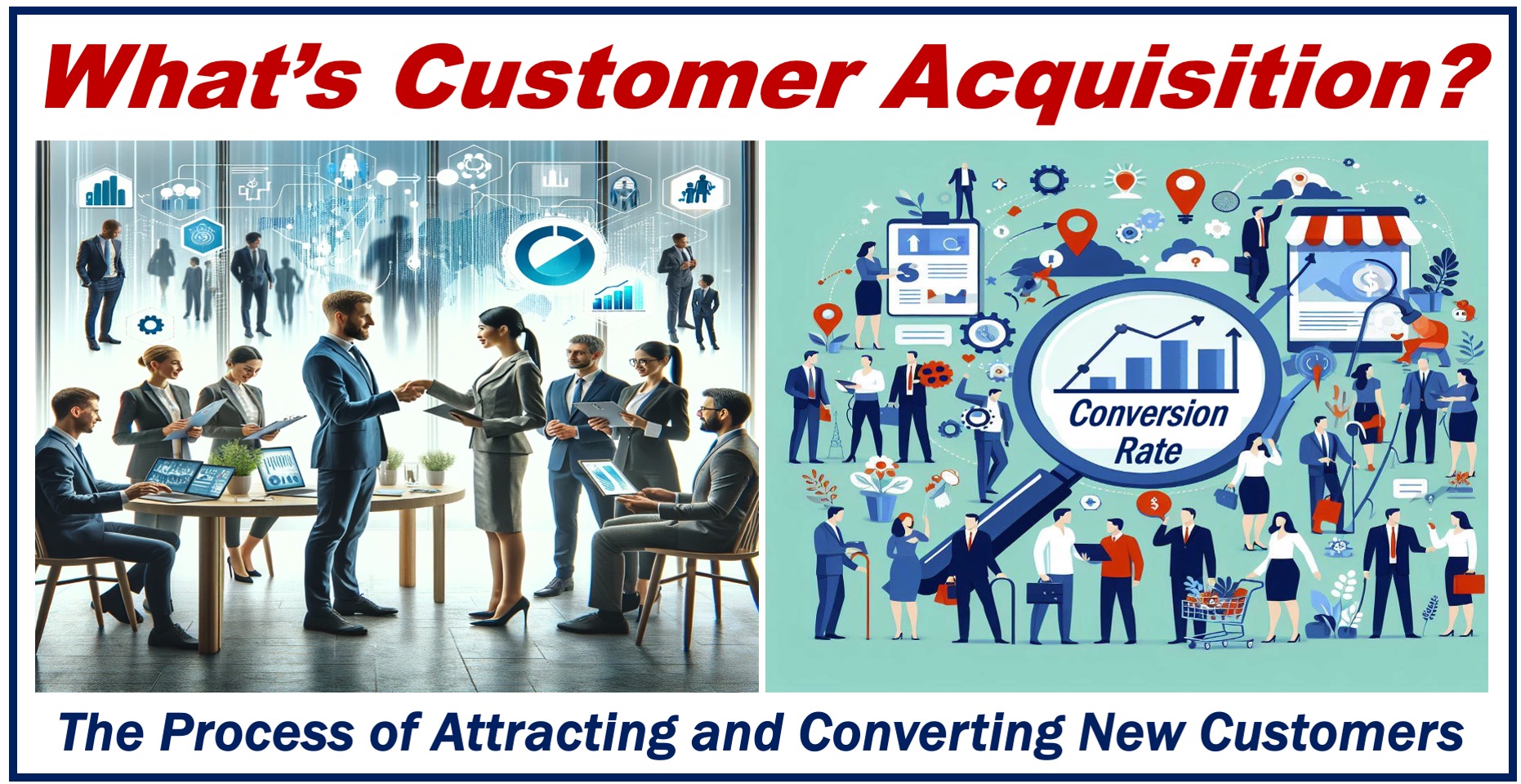If your job involves attracting and bringing in new customers, you are involved in Customer Acquisition. If you work in a consulting, legal, or accounting firm, you would be involved in Client Acquisition. While similar to customer acquisition, the term “client” usually implies a more ongoing relationship-based interaction than “customer.”
Gaining new customers is one goal that every commercial enterprise has in common. It is a fundamental concept that plays a key role in the growth and sustainability of any company.
Regardless of industry or size, businesses across the world strive to expand their customer base. Customer acquisition helps us boost sales, enhance our brand image, and gain market share.
Understanding the function of customer acquisition, how it works, and why it matters, can help sales and marketing professionals devise effective strategies to expand their customer base.
Amazon Ads says the following about the term:
“Customer acquisition refers to the process of bringing in new customers or clients for your business. This is typically achieved when a customer purchases your product for the first time, or subscribes to your service, and it is, in many ways, the central goal of a company.”
Customer acquisition – a series of steps
Customer acquisition, at its core, involves a series of steps aimed at converting consumers into paying customers. These consumers are typically aware of the product.
You should focus on prospects – consumers who, in your view, are more likely than average to become paying customers.”
The process involves the following steps:
-
Step 1 – Identifying the target audience
First, you need to find out who is likely to be interested in what your company has to offer – your target audience.
When you have identified them, you can employ various marketing and advertising strategies to reach these people.
You can focus on digital marketing, such as search engine optimization (SEO), social media campaigns, traditional methods such as direct mail (using surface mail) and print ads, or both.

-
Step 2 – Engaging with the target audience
You can engage with your audience with high-quality content, persuasive messaging, and compelling offers.
Whatever way you choose to engage with your potential customers, they must see your company as professional, reliable, honest, and top quality. If you manage to enhance your company’s brand image during this step, you will be able to guide your prospects to the next step more effectively.
Engagement can take many forms, including informative videos, educational blog posts, and interactive social media content, webinars and online workshops, email newsletters, customer testimonials and success stories, personalized offers and promotions, engaging quizzes, and polls.
-
Step 3 – Conversion
In this step, the last one in the customer acquisition process, prospects are converted into paying customers. This is when they make the decision to purchase a product or service.
Many people say that Step 3 is the most important one, because that is when your company makes a sale. However, it is important to remember that if Steps 1 and 2 are not done properly, Step 3 is much less likely to happen. All three steps are important!
Customer acquisition metrics
You need to measure how effective strategies are. You can track various metrics such as:
- The number of new customers acquired through specific marketing campaigns:
Tracks the effectiveness of marketing efforts in attracting new customers. - The return on investment (ROI) of their acquisition activities:
Measures the profitability of marketing campaigns, indicating financial returns. - The cost of acquiring a new customer (CAC):
Calculates how much is spent to gain a new customer, essential for budgeting. - Customer lifetime value (CLV):
Estimates the total revenue a business can expect from a customer over their relationship. - Conversion rate:
Shows the percentage of prospects that become customers, assessing the efficiency of conversion strategies. - Customer retention rate:
Indicates the percentage of customers who stay with the business over time, a sign of loyalty and satisfaction. - Time to conversion:
Measures the average duration from a prospect’s first contact to becoming a customer, guiding efforts to streamline the process.
These metrics help you understand what is working and what is not, and where and how you can improve things.
Final thoughts
Customer acquisition is about attracting and acquiring new customers. You find out who your target audience is, approach them, engage them, and try to convert as many as possible into paying customers.
Shopify.com concludes with the following short paragraph on its web page about customer acquisition:
“Customer acquisition is about demystifying how customers discover your brand and why they buy from you, so you can improve the customer experience. This will allow you to spend your marketing dollars more strategically, improve customer lifetime value, and grow your business steadily over time.”
